
Photo courtesy of Canva
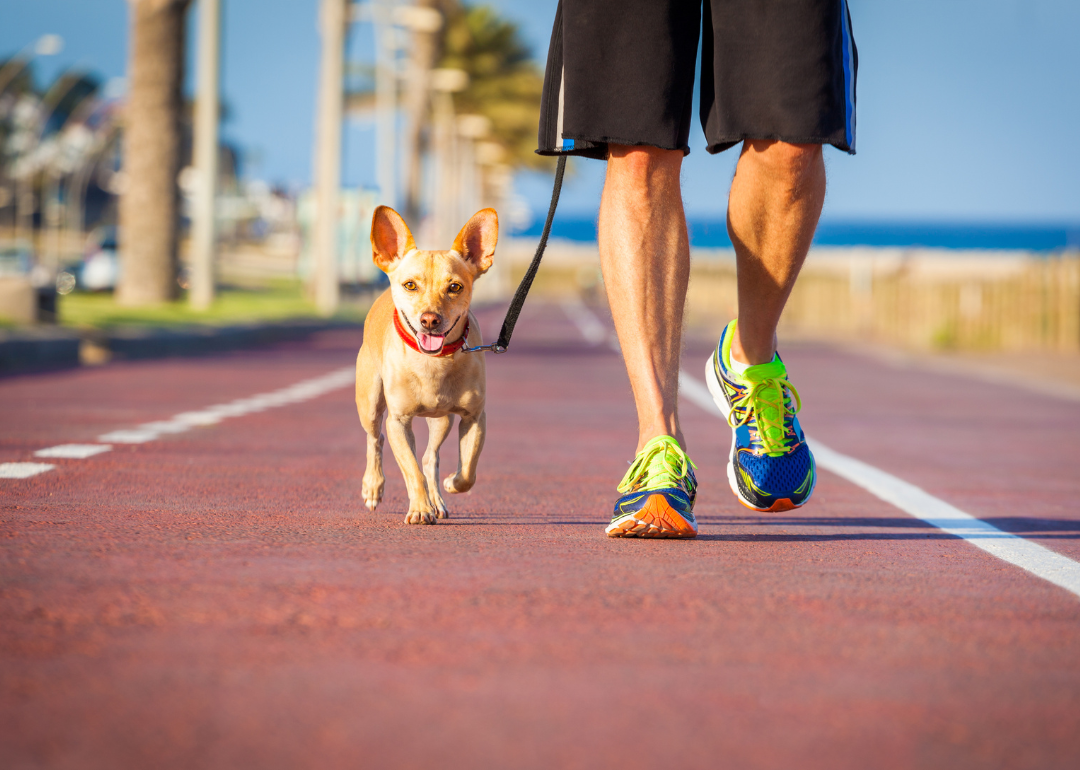
Walks invigorate dogs mentally and physically. Veterinarians suggest dogs should go around the block daily, if not multiple times a day. It’s estimated that 4 out of 10 people do not walk their dogs regularly, opting instead to let them out in the yard or take them outside solely for bathroom breaks. Dog parents who do walk their dogs, however, are committed. One study cited by Psychology Today found that they average five hours a week—the equivalent of 11 days a year—stretching their canine companion’s legs in addition to their own.
Although having a dog is correlated with increased physical activity for humans, many people report being motivated to walk their dogs not out of concern for their own health but for their pets’ well-being. While such altruism is laudable, walks can be enjoyable for humans, too. A few strategies include switching up the scenery, teaching new tricks, and stopping to smell the roses. Walking your dog is undoubtedly one of the most time-consuming aspects of being a pet parent, but it can also be one of the most rewarding.
Wag! compiled a list of eight ways to make the most out of walking your dog from scientific research, news reports, veterinarians, and other experts.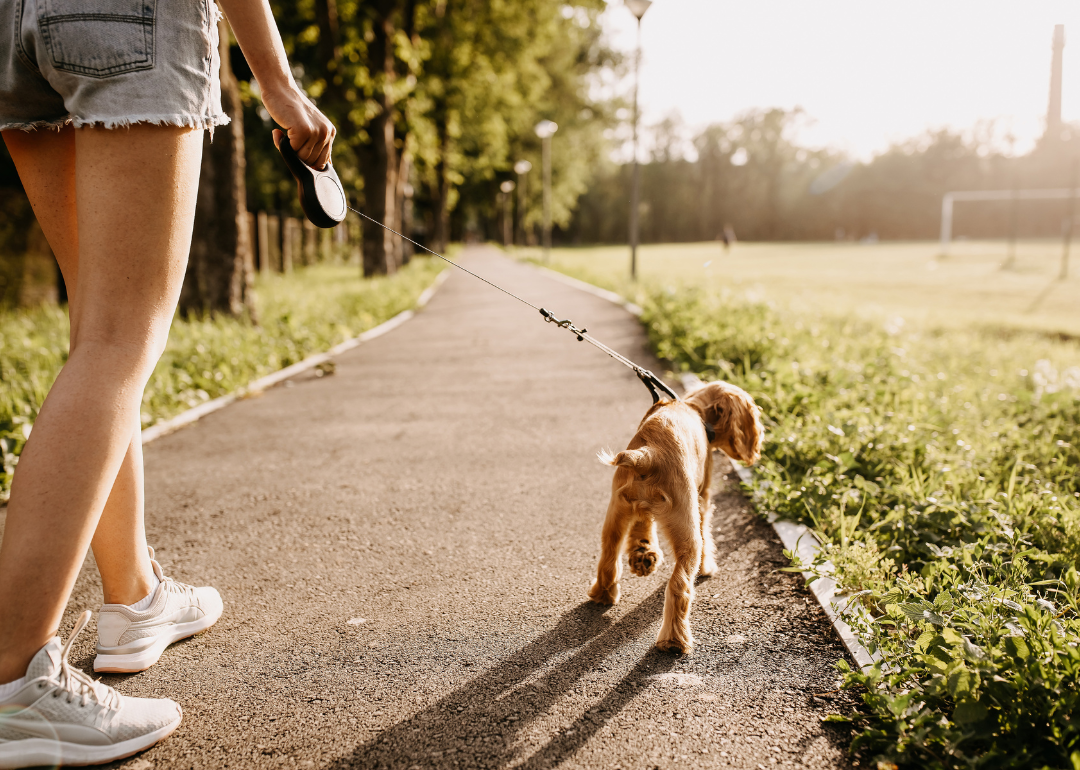
Natalia Bostan // Shutterstock
Find the rhythm that works for both of you
The optimum dog-walking speed is a compromise between human and animal that depends on many factors, from the dog’s age to weather conditions to how many things you need to get done that day. Puppies-in-training that charge heedlessly ahead may benefit from a firm hand on the leash, while seasoned seniors that don’t move as fast as they used to require patience and a gentle grip. With dogs of all ages, it’s important to be mindful of extreme temperatures—especially heat during the summer—and modify the pace accordingly.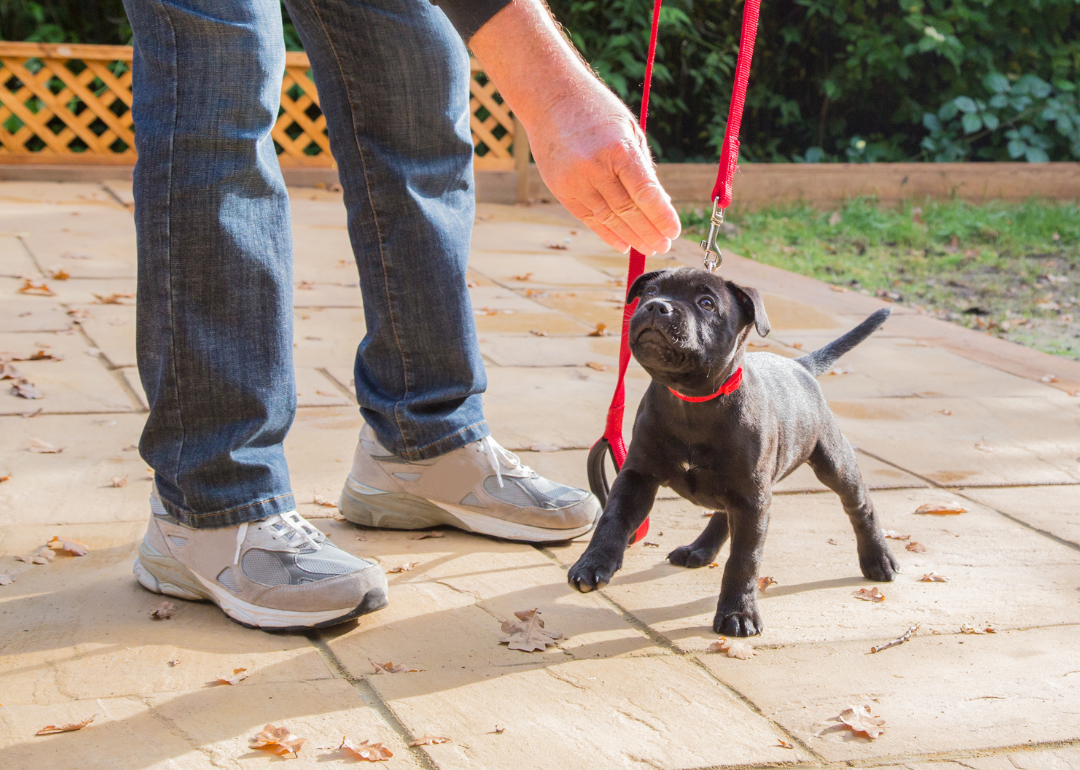
Christine Bird // Shutterstock
Stick to a routine and be consistent with what you teach your dog
Some people spell out the word “walk” because some dogs seem to lose their minds at the mere mention of the word. New Jersey-based dog trainer Kathy Santo gave the American Kennel Club a few tips for managing furry friends that get overly excited when the leash comes out or are easily distracted once outside. Santo said to reward good behavior with treats and make sure every member of the household reinforces the lessons being taught. Although training can take up to a year, she said, it’s possible to teach puppies how to walk calmly in as little as two weeks.
Canva
Focus on terrain and pace, not distance
For dogs with osteoarthritis or other physiological issues that impair their ability to travel very far, it’s essential to be mindful of uneven sidewalks, outdoor stairs, steep hills, and other topographical features that might be challenging. If you’re feeling adventurous and want to take pooches into the wilderness, a gradual approach is best. Go on short hikes first to acclimate paws and bodies to new terrain. If your pup is still chomping at the leash by the end of the introductory hikes, extend the distance you travel together next time.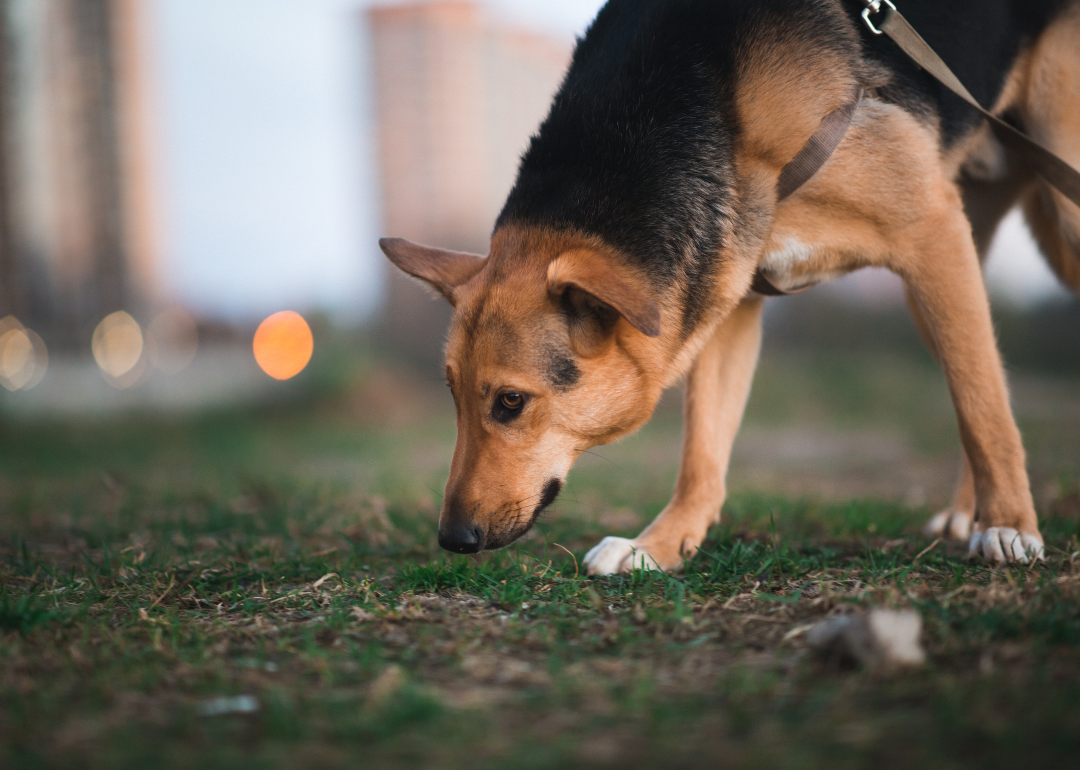
Canva
Let your dog take you for a walk
A canine sense of smell is about 10,000 to 100,000 times stronger than a human’s. Although you may marvel at your pooch’s olfactory glands, be sure to deter them from honing in on potentially hazardous items by saying “no” or “leave it.” For those that can’t take their noses off the ground, dog behaviorist Colleen Demling-Riler recommends following a 70/30 rule. For example, if you take your dog around the block for 10 minutes, allow seven minutes for walking and three minutes for sniffing.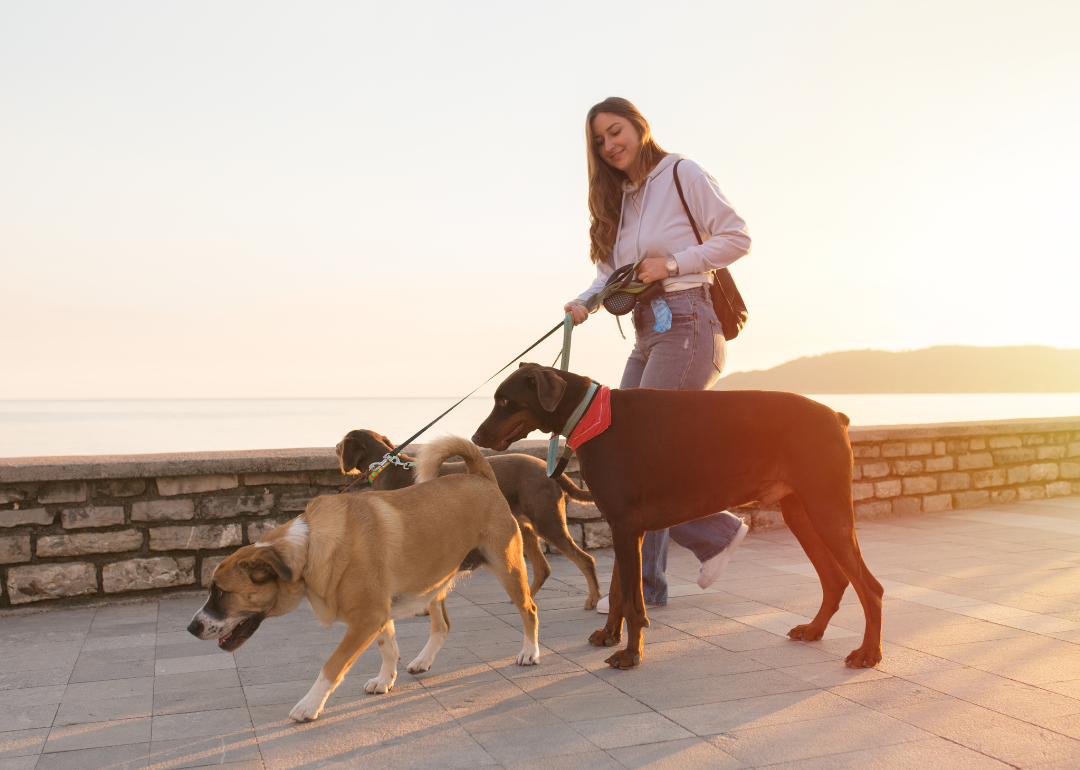
Canva
Make walking your dog part of your daily exercise
Dog walking has emerged as a mutually beneficial antidote to the climbing rates of obesity in dogs as well as humans. Going for a brisk stroll with a dog for 25 minutes six days a week would fulfill the 150 minutes of weekly moderate cardiovascular exercise that physicians prescribe for healthy adults. Not only that, but researchers have found that walking with a dog has demonstrated more stress-relieving benefits than doing the same activity solo or even with another person. Incorporating lunges and butt-kicks (while continuing to hold onto the leash) adds a bonus workout if you are feeling frisky.
Canva
Add physical and mental stimulation by switching things up during walks
“Changing the walk route allows the dog to encounter novel scents and new scenery,” North Carolina-based dog trainer John D. Visconti told the Dayton Daily News. He recommends occasionally allowing man’s best friend to steer the course, breaking up the pace with light jogging or speed walking, and exploring locations that are within driving distance on the weekends. If you shake things up every once in a while, Visconti told PetMD, walks “won’t become boring or routine.”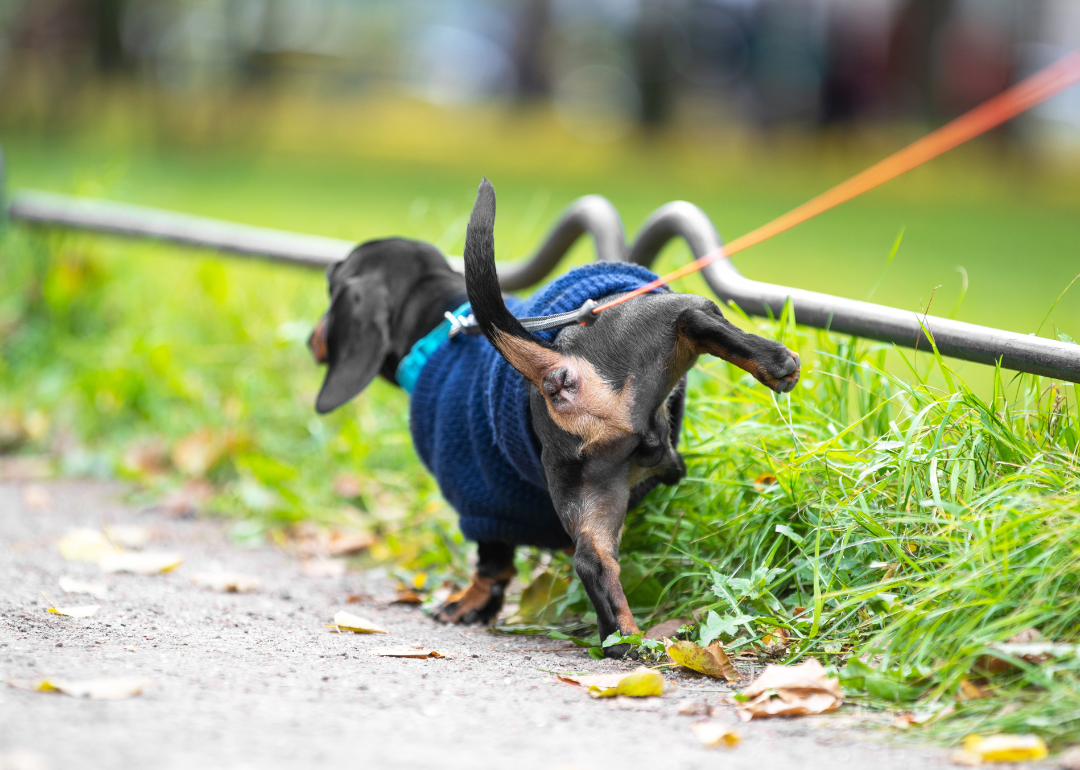
Masarik // Shutterstock
Give them time for bathroom breaks
For dogs, going to the bathroom is akin to co-workers gathering around the proverbial water cooler. In addition to functioning as a scent or territorial marker, canine urine gives eager sniffers the 411 on their four-legged neighbors’ age, sex, health, and more. Researchers have even suggested that small dogs lie about their size by aiming high when they pee. Learning new information is just as mentally stimulating for dogs as it is for humans, so be sure that when you find a respectful location for a doggie bathroom break, allow plenty of time for them to do their business.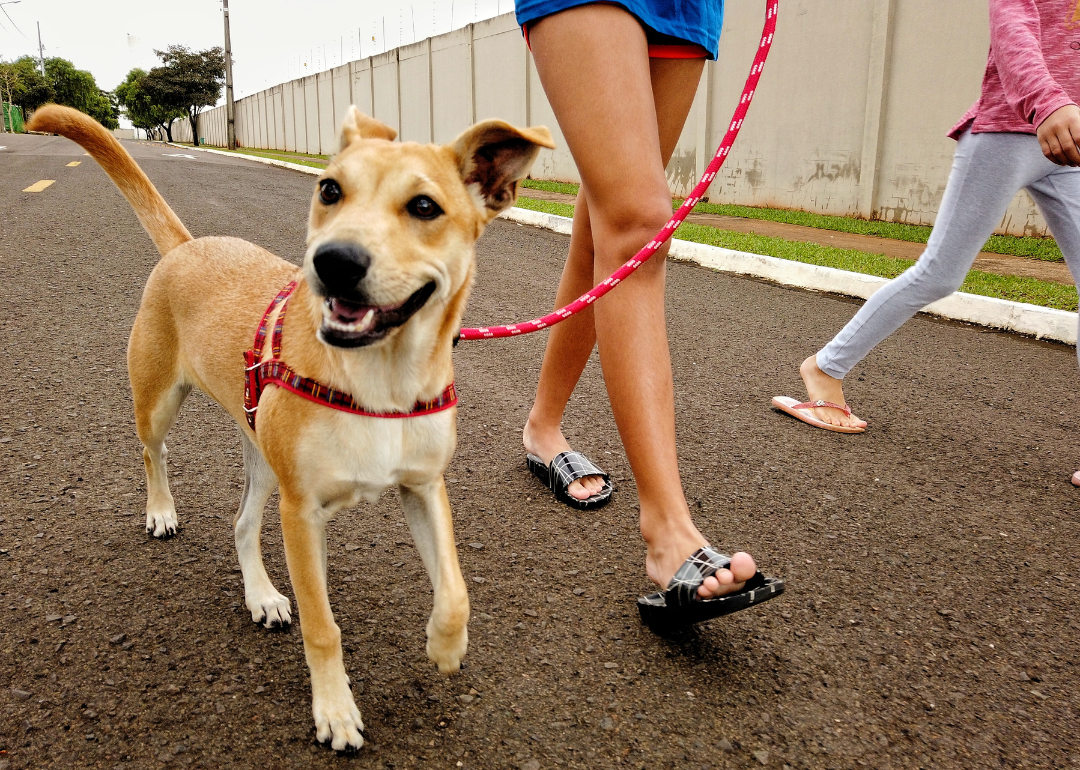
Canva
Don’t pull too hard on the leash
No, your dog isn’t stubborn—all dogs have an opposition reflex, an instinct to push back against pressure, like when you’re tugging impatiently on the leash. Yanking too hard on a dog’s leash can damage the trachea and cause other kinds of neck injuries. Helpful techniques for teaching your dog to walk on a loose leash include “becoming a tree” (standing completely still when your dog pulls and only moving again when the leash goes slack) and holding treats in a fanny pack or other waist pouch while walking, which will entice your dog to stride side-by-side with you.
This story originally appeared on Wag! and was produced and distributed in partnership with Stacker Studio.

Here’s everything you need to know about this month’s Mercury retrograde
Does everything in your life feel a little more chaotic than usual? Or do you feel like misunderstandings are cropping up more frequently than they...

VIDEO: Check out Dogwood’s new merch line
Big news, Virginia! We've officially launched our Dogwood merch line 🎉 This year, we celebrate 5 years of bringing you Virginia news you can use....

VIDEO: Your support matters!
Your support matters! Donate today. @vadogwoodnews Your support matters! Visit our link in bio to donate today. #virginianews #virginia #community...

Op-Ed: Virginia’s new Democratic majorities pass key bills to improve your lives, but will Youngkin sign them?
The 2024 Virginia General Assembly regular session has wrapped up. It was a peculiar session from the outset, with Democratic majorities in the...

From the state rock to the state flower, here’s how Virginia got its symbols
Have you ever wondered why the Dogwood is the state flower? Or how the cardinal became the state bird? We’re here to answer those questions and more...

VIDEO: Second-gentleman Douglas Emhoff gives speech on reproductive freedom
Second gentleman, Douglas Emhoff touched on reproductive freedom not only being a woman's issue but "an everyone's issue" during the Biden-Harris...





